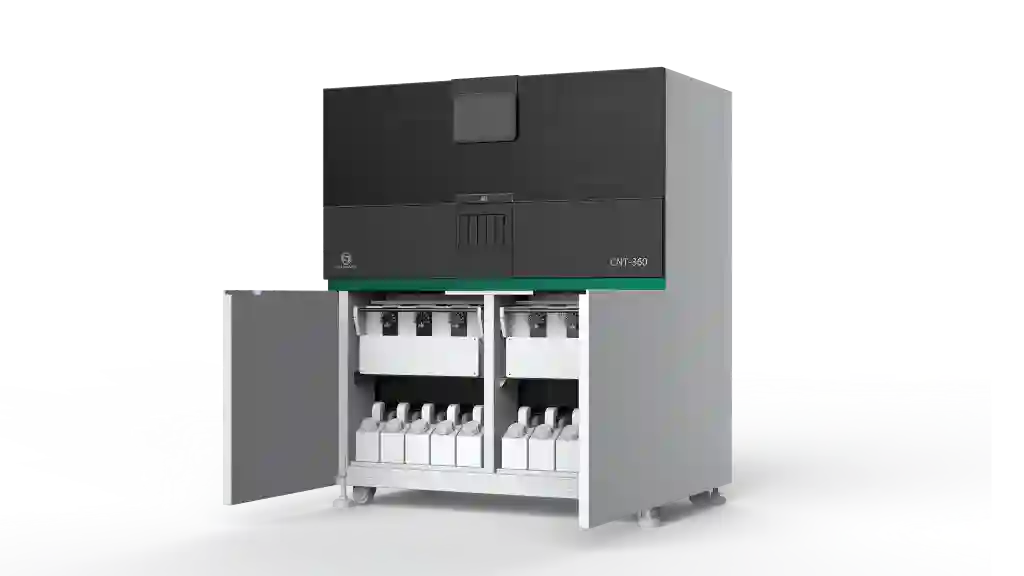How Can Slide Stainer Protocols Be Optimized for Quicker Outcomes?
In the fast-paced world of histology and pathology, refining slide staining protocols can transform laboratory efficiency. By boosting speed, shortening wait times, and sharpening precision, labs can produce rapid diagnostic results without sacrificing excellence—elevating both output and research quality.
Enhancing Efficiency in Slide Staining Processes
In histology and pathology, the smoothness of slide staining workflows is critical. Swiftly creating top-notch stained slides can greatly affect diagnostic schedules and study results. Improving slide stainer protocols requires a broad strategy. This includes simplifying tasks, adopting cutting-edge tools, and ensuring staff are thoroughly trained.
Streamlining Workflow in Laboratories
A smooth workflow is vital for refining slide stainer protocols. Labs should assess their existing methods to spot delays and weak points. For instance, they can rearrange the lab setup to cut down on unnecessary steps and keep supplies close at hand. Also, using a tracking system for slides during staining can prevent losses and reduce holdups.
Rearrange lab setup: Place tools cleverly to limit movement.
Use tracking tools: Apply barcodes or RFID tags for smooth slide handling.
Implementing Advanced Technologies
Adding modern tools to slide staining can vastly improve speed. Automated slide stainers provide steady outcomes with little human effort, cutting down on differences and speeding things up. Plus, digital imaging tools allow quick reviews of stained slides, making decisions faster.
Automated slide stainers: Lessen manual work and boost output.
Digital imaging: Speeds up analysis and sharing of findings.
Training and Skill Development
Even with high-tech tools, skilled workers are key to polished protocols. Regular training keeps staff sharp with new devices and methods, reducing mistakes and lifting overall pace. Frequent workshops and certification courses can update team skills on the best staining practices.
Ongoing training sessions: Keep staff skilled with the latest tools.
Certification programs: Uphold top levels of expertise.
Selecting Appropriate Reagents and Equipment
The pick of reagents and tools plays a big role in refining slide stainer protocols. Choosing suitable reagents can enhance staining clarity, while reliable gear ensures steady, swift performance.
Criteria for Choosing Reagents
When picking reagents for slide staining, consider factors like tissue match, color strength, and durability. Top-grade reagents lead to dependable results and cut the need for redo work.
Match: Ensure reagents suit various tissue kinds.
Color strength: Pick reagents that offer sharp contrast.
Durability: Choose stable options to avoid frequent swaps.
Evaluating Slide Stainer Equipment
Selecting the best slide stainer gear means checking features like automation options, size capacity, user-friendliness, and upkeep needs. Trustworthy tools reduce downtime and lift lab output.
|
Feature |
Importance |
|
Automation |
Boosts output with little oversight |
|
Capacity |
Handles different sample sizes |
|
Ease of Use |
Makes operation simple for all levels |
|
Maintenance |
Cuts long-term running costs |
Standardizing Protocols for Consistency
Uniformity is crucial for dependable staining results. Standardizing methods ensures steady outcomes across batches and workers.
Developing Standard Operating Procedures (SOPs)
Crafting clear SOPs sets a solid guide for staining tasks. These should detail each step, from start to finish. This ensures everyone follows the same path.
Clear records: Cover all parts of the staining process.
Frequent updates: Adjust for new tools or techniques.
Monitoring and Quality Control Measures
Strong quality checks help keep staining results steady. Regular reviews spot issues early, allowing quick fixes.
Quality checks: Done at key process stages.
Feedback cycles: Support ongoing improvement from data.
Minimizing Errors and Reducing Turnaround Time
Mistakes in slide staining harm results and stretch wait times. Spotting common slip-ups and using fixes is key to protocol improvement.
Common Errors in Slide Staining and Prevention Strategies
Knowing frequent errors, like uneven prep or wrong reagent use, helps labs set up safeguards. Routine checks can highlight ongoing problems to tackle.
Error spotting: Review past cases to find repeat issues.
Fixes: Add checks at vital workflow points.
Techniques to Reduce Turnaround Time
Cutting wait times without losing quality needs smart planning. Methods like group processing or parallel tasks can slash delays while keeping precision high.
Group processing: Tackle many samples at once.
Parallel tasks: Use multiple stations or teams for steps together.
Celnovte: A Reliable Slide Stainer Supplier
In the push for better slide stainer protocols, picking a trusted supplier matters. Celnovte shines as a dependable source of top-tier slide stainers and gear. Their focus on fresh ideas and customer care makes them a top pick for labs aiming to polish their staining workflows.
Overview of Celnovte’s Offerings
Celnovte provides a wide array of products tailored to modern lab needs. Their lineup features advanced automated slide stainers built for accuracy and speed. These come with adjustable options, letting users tweak protocols to fit specific tasks. Also, Celnovte offers strong support and training to blend their tools into current setups smoothly.
Automated Slide Stainers: Packed with options for steady, high output.
Adjustable Protocols: Flexible settings for diverse staining needs.
Technical Support: Full help for setup and upkeep.
Training Programs: Build lab staff skills for best use.
FAQs on Slide Stainer Protocol Optimization
Grasping the details of slide stainer protocol improvement can be tricky. Here are common questions that tackle key concerns and shed light on achieving swifter results.
What are the key benefits of optimizing slide stainer protocols?
Refining slide stainer protocols brings many perks that can reshape lab work:
Higher Speed: Smoother tasks cut time per sample.
Better Precision: Steady results lower error risks.
Cost Cuts: Less reagent and labor use via automation.
Faster Results: Quicker work leads to rapid diagnostics.
How does automation impact slide staining processes?
Automation reshapes slide staining with several big wins:
Steadiness: Machines give even results across samples.
Quickness: Faster than hand methods.
Less Work: Frees staff for other duties.
Growth: Manages rising sample loads with ease.
Why is standardization important in slide staining?
Standardization ensures trust and repeatability across labs:
Same Steps: Keeps all workers on one track, cutting differences.
Quality Promise: Supports steady checks across batches.
Comparison: Allows result matching across studies or sites.
Final Thoughts on Optimizing Slide Stainer Protocols
Polishing slide stainer protocols is central to lifting lab speed and precision. Focus on task streamlining, modern tools, skilled staff, right reagents and gear, uniform methods, error cuts, and trusted suppliers like Celnovte. This helps labs achieve swift results without losing quality. These steps together sharpen diagnostic skills and boost research output in histology and pathology fields.







